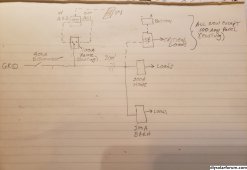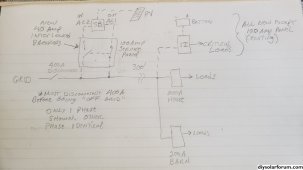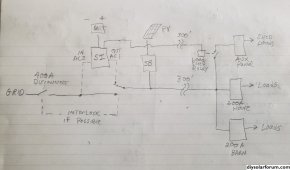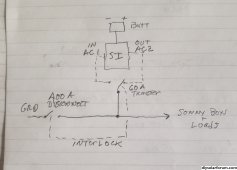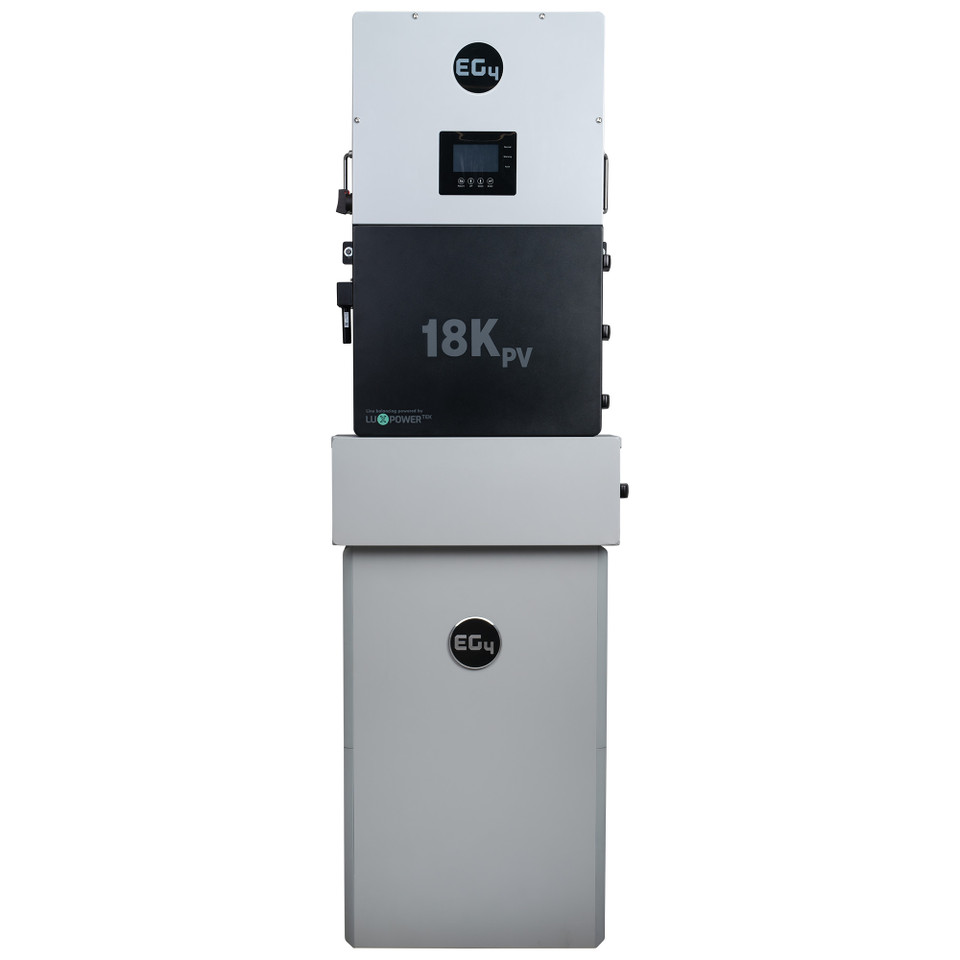Hedges
I See Electromagnetic Fields!
- Joined
- Mar 28, 2020
- Messages
- 20,697
Critical loads meaning keep them powered to the last gasp of the battery. Includes Sunny Boy, since they need AC in order to deliver PV power for charging. Alternatively, you can tell Sunny Island to sleep until an alarm clock goes off. Or search mode, I think, where it periodically wakes up to check for loads - not sure about that one.
By protected loads I mean same as critical loads, except have a relay to shed them at say 70% DoD (at least with lead-acid, SI keeps operating down to 80% DoD, using 10% to keep critical loads and SB powered.) For HVAC, you'd only have to control the low voltage thermostat signal.
If you run the battery down to the point of SI shutting off, it won't pass grid through and it won't wake up. If that happens you need a way to recharge the 48V battery. Then when it is awake you need to reduce AC loads below the power produced by PV so battery continues to charge. Load shed is supposed to take care of this.
You don't need another AC line to the house if you use the existing AC wires to power the house. That makes all loads critical loads. If you split the wires to two sub panels, and use a load shed relay for one of them, then you have separate protected loads and critical loads. Need a pair of wires e.g. doorbell or LAN wire to switch the relay. I use a 48V coil relay that is listed in SI manual as accessory. Could use 120V or 240V coil relay, wired with suitable insulation.
Of course, this limits you to 56A 120/240V for all loads. I use 4x SI stacked 2p2s for up to 112A feed through.
400A or 200A relays are much smaller than safety switches, about the size of breakers. SMA has a 200A relay in an external box for other products but not US model Sunny Island. They used to offer one together with auto-transformer for a single Sunny Island, haven't seen it in years. They have 200A relay for US model Sunny Boy Storage and European model Sunny Island.
Do you use all 400A? Or just 200A?
You could set up a transfer switch, or interlocked breakers in 200A panel, located where you show disconnect switch. While grid is up, 2x SI are fed (AC2 input) from a 70A or smaller breaker, keeping battery charged. If grid goes down you manually shut off excessive loads, manually transfer from grid to SI AC1 output. (switch off AC2 input if fed from same panel so SI input doesn't see SI output.) You are then running off grid.
If you feed SI AC2 input from fused or breaker protected input of transfer switch, then grid is available to keep feeding SI and loads, and PV can still backfeed. This is what I've got - 200A breaker at meter branches to 200A loads panel and Sunny Island, which feed Sunny Boys and protected loads. If grid goes down, protected loads stay up (shed at 70% DoD). If I throw a couple breakers, the 200A loads panel is also fed by Sunny Island. It is up to me to not exceed 12kW per phase.
If you have a transfer switch, do NOT switch input of Sunny Boy or Sunny Island from one live AC source to another instantly. Allow 5 seconds off time, to ensure inverter disconnects and doesn't find itself backfeeding an AC source that happens to be 180 degrees out of phase. I'm not sure how fast automatic transfer switches are. Using interlocked breakers I can do it slowly (some designs allow fraction of a second, avoid those.) DPDT relay would be too fast. Two DPST relays with delay between them could work.
By protected loads I mean same as critical loads, except have a relay to shed them at say 70% DoD (at least with lead-acid, SI keeps operating down to 80% DoD, using 10% to keep critical loads and SB powered.) For HVAC, you'd only have to control the low voltage thermostat signal.
If you run the battery down to the point of SI shutting off, it won't pass grid through and it won't wake up. If that happens you need a way to recharge the 48V battery. Then when it is awake you need to reduce AC loads below the power produced by PV so battery continues to charge. Load shed is supposed to take care of this.
You don't need another AC line to the house if you use the existing AC wires to power the house. That makes all loads critical loads. If you split the wires to two sub panels, and use a load shed relay for one of them, then you have separate protected loads and critical loads. Need a pair of wires e.g. doorbell or LAN wire to switch the relay. I use a 48V coil relay that is listed in SI manual as accessory. Could use 120V or 240V coil relay, wired with suitable insulation.
Of course, this limits you to 56A 120/240V for all loads. I use 4x SI stacked 2p2s for up to 112A feed through.
400A or 200A relays are much smaller than safety switches, about the size of breakers. SMA has a 200A relay in an external box for other products but not US model Sunny Island. They used to offer one together with auto-transformer for a single Sunny Island, haven't seen it in years. They have 200A relay for US model Sunny Boy Storage and European model Sunny Island.
Do you use all 400A? Or just 200A?
You could set up a transfer switch, or interlocked breakers in 200A panel, located where you show disconnect switch. While grid is up, 2x SI are fed (AC2 input) from a 70A or smaller breaker, keeping battery charged. If grid goes down you manually shut off excessive loads, manually transfer from grid to SI AC1 output. (switch off AC2 input if fed from same panel so SI input doesn't see SI output.) You are then running off grid.
If you feed SI AC2 input from fused or breaker protected input of transfer switch, then grid is available to keep feeding SI and loads, and PV can still backfeed. This is what I've got - 200A breaker at meter branches to 200A loads panel and Sunny Island, which feed Sunny Boys and protected loads. If grid goes down, protected loads stay up (shed at 70% DoD). If I throw a couple breakers, the 200A loads panel is also fed by Sunny Island. It is up to me to not exceed 12kW per phase.
If you have a transfer switch, do NOT switch input of Sunny Boy or Sunny Island from one live AC source to another instantly. Allow 5 seconds off time, to ensure inverter disconnects and doesn't find itself backfeeding an AC source that happens to be 180 degrees out of phase. I'm not sure how fast automatic transfer switches are. Using interlocked breakers I can do it slowly (some designs allow fraction of a second, avoid those.) DPDT relay would be too fast. Two DPST relays with delay between them could work.



